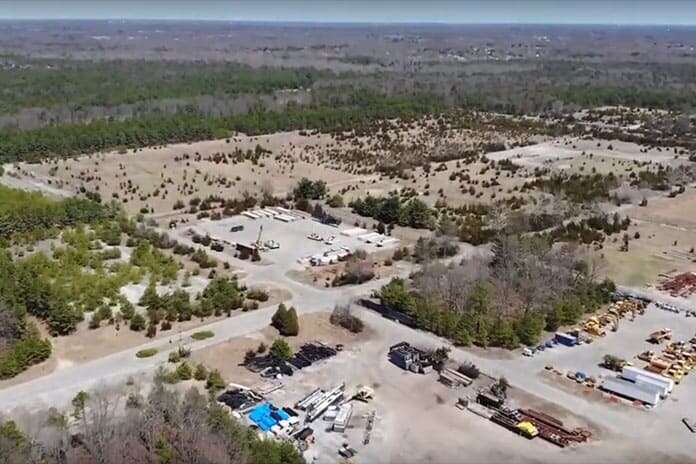
TOMS RIVER – The State Department of Environmental Protection is asking the public for comments on a proposed settlement that would remediate the Ciba-Geigy property into passive open space, an environmental center, and a solar field.
Ciba once manufactured dyes and other chemicals, and was one of the region’s largest employers. They were also dumping waste directly into the water, the ground, and burying drums of toxic chemicals. Many people attribute the area’s cancer cluster to its operation.
The property changed hands several times over its history and is now owned by German company BASF. On December 5, the DEP announced a settlement with BASF that would preserve 1,000 acres as open space.
Additionally, hundreds of acres would be restored through “a variety of ecological improvement projects.” This includes the creation of a freshwater wetlands complex, upland grasslands, and a pollinator habitat.
There would be walking and running trails, a boardwalk, and an environmental education center. The project could break ground as soon as spring of 2023 and be open to the public in phases over the next five years.
Of the 1,000 acres to be preserved, approximately 790 acres will be maintained as open space and will include restoration projects for ecological uplift, habitat enhancement, and public access, the DEP said. The remaining 210 acres will be set aside for pollinator habitat and solar energy production.
“Having spent my childhood on the other side of the fence from this polluted site, I know what this settlement will mean to the families and children of those neighborhoods,” said Deputy Commissioner of Environmental Protection Sean D. Moriarty, who oversees the DEP team that developed this settlement. “I am proud to have played a small part in transforming a previously forbidden place into somewhere the community can truly connect with nature and appreciate its immense value to health and wellbeing.”
The DEP’s press release included words of praise about the proposed settlement from DEP Commissioner Shawn M. LaTourette, Taylor McFarland, Conservation Manager for the Sierra Club, New Jersey Chapter, and Alex Ireland, President and CEO of New Jersey Audubon.
One person who already contributed his comments is Mayor Maurice Hill.
“Preserving 1,000 acres of open space is great news for the residents of Toms River who are all concerned by the impact of overdevelopment on the quality of life in our community,” Hill said. “So long as the pollution has been successfully remediated, making the site safe for public access, the proposed nature preserve, park, trails, a boardwalk, and environmental center would be a great enhancement for our residents and a potential boom to our tourism industry.
“However, I have three requests of NJDEP and BASF that will be formally made during the public comment period and in letters to Governor Murphy and New Jersey Commissioner of Environmental Protection Shawn M. LaTourette:
1. Given the devastation that Ciba-Geigy’s cancer cluster wreaked on Toms River families, the proposed environmental center should be required to include an exhibit that comprehensively documents the damage the pollution caused to our environment, the health of our residents, and the negative economic impact on our community. A committee of academics, environmentalists and Toms River residents should be appointed to create and maintain the exhibit. The exhibit should be generously funded by BASF.
2. The remaining 255 acres of the site, or a significant portion thereof, should be deeded to Toms River Township for perpetual preservation, so long as BASF remains responsible for the cost of ongoing remediation.
3. A fund to compensate the victims of the cancer cluster should be set up by BASF and administered by a trustee appointed by the Township.”
Ciba-Geigy opened in 1952 and closed in 1990. It became an EPA Superfund Site in 1983. The settlement with the DEP will not impact the situation with the EPA.
BASF assumed responsibility for the site in 2010 through corporate acquisitions. When BASF acquired Ciba, the property was undergoing remediation efforts such as excavation and capping of contaminated areas and the pumping and treatment of contaminated groundwater, the DEP said.
How To Comment
Comments may be submitted electronically at onrr@dep.nj.gov. Comments will be accepted until February 3.
There is a way to comment on the settlement on the DEP’s site as well. The proposed settlement agreement between BASF and the DEP can be found here: nj.gov/dep/nrr/settlements/index.html
For more information on the EPA’s remediation process, visit cumulis.epa.gov/supercpad/SiteProfiles/index.cfm?fuseaction=second.cleanup&id=0200078#Status
For information from the EPA on site background and cleanup progress, visit cumulis.epa.gov/supercpad/SiteProfiles/index.cfm?fuseaction=second.cleanup&id=0200






